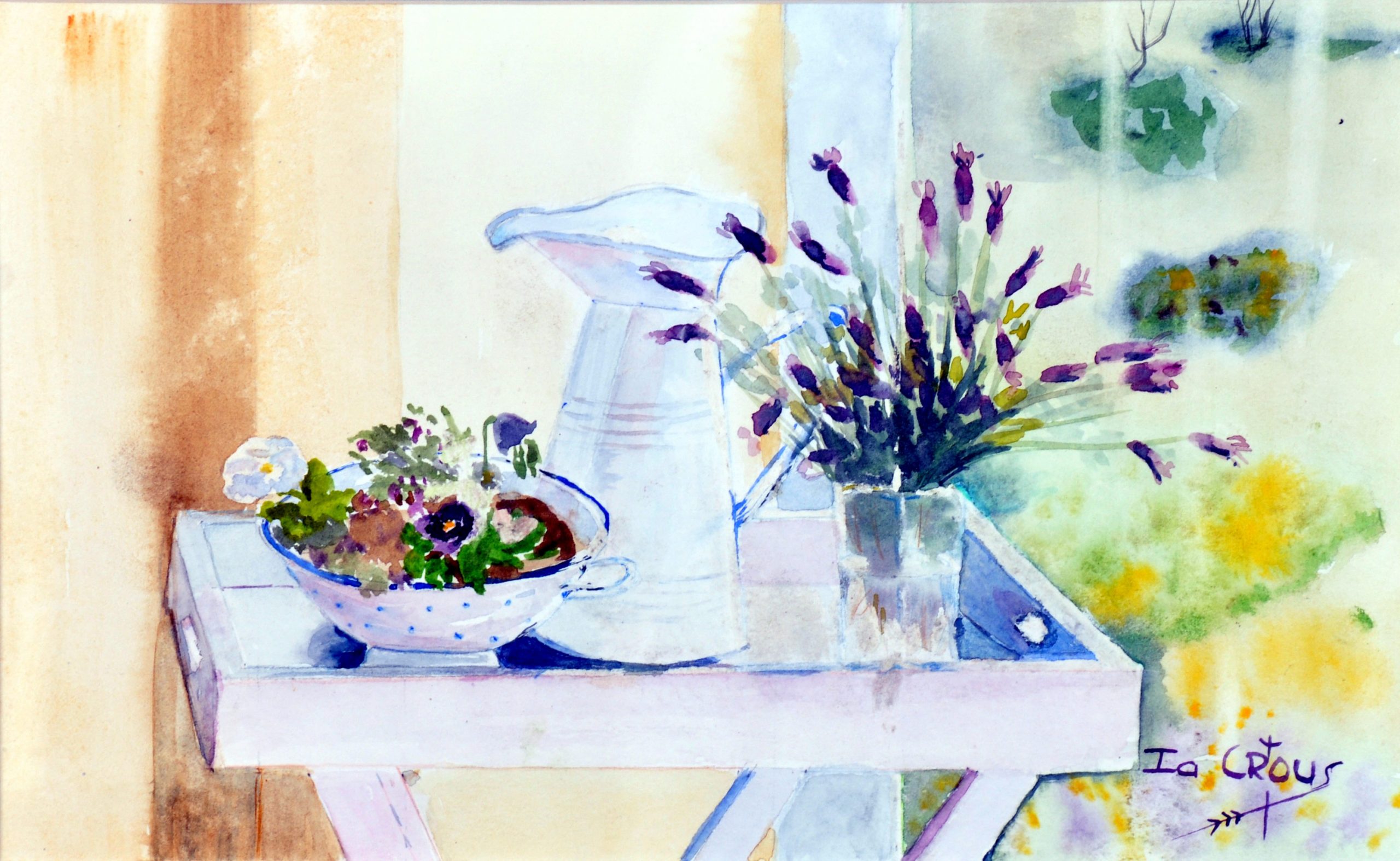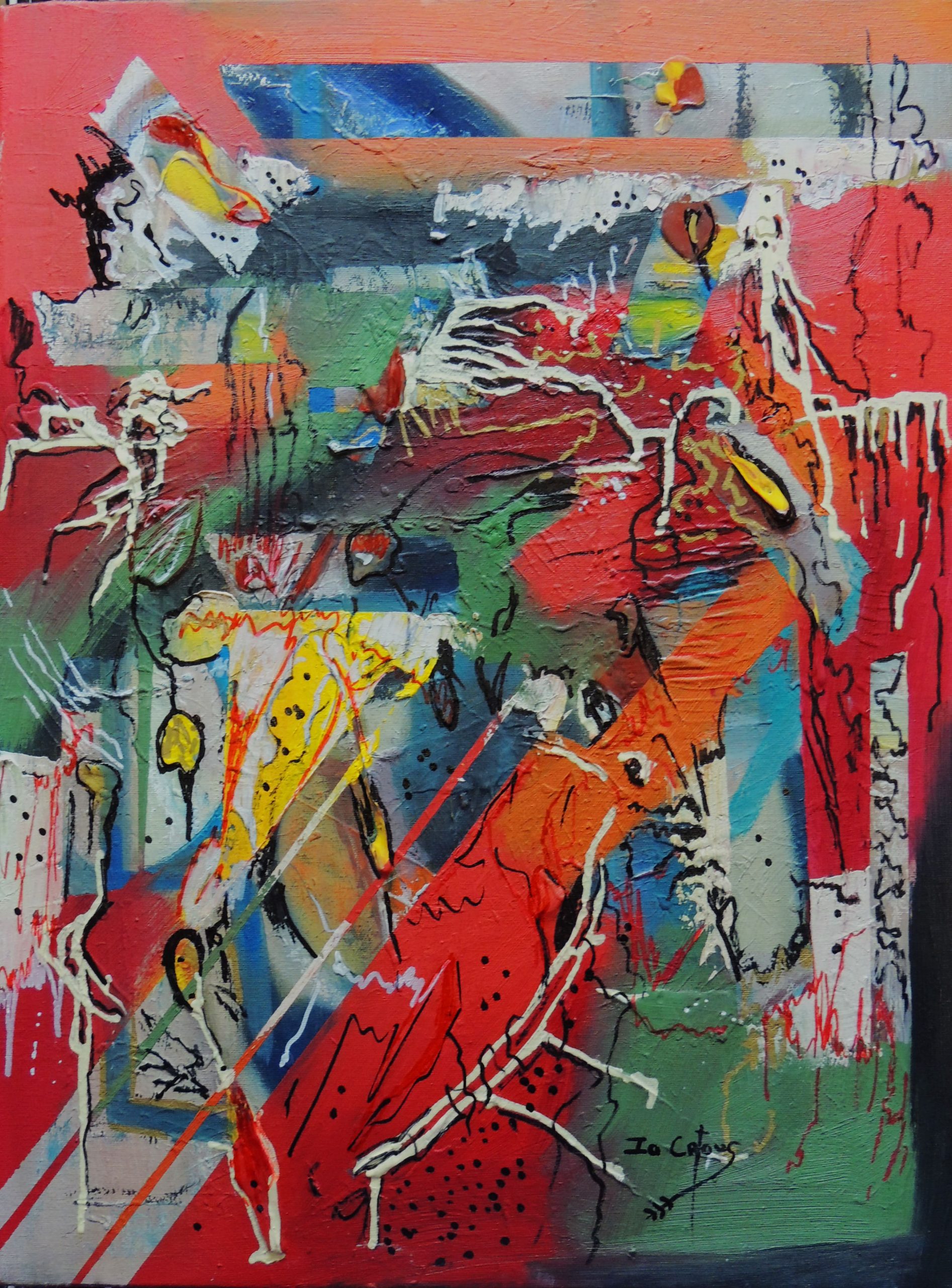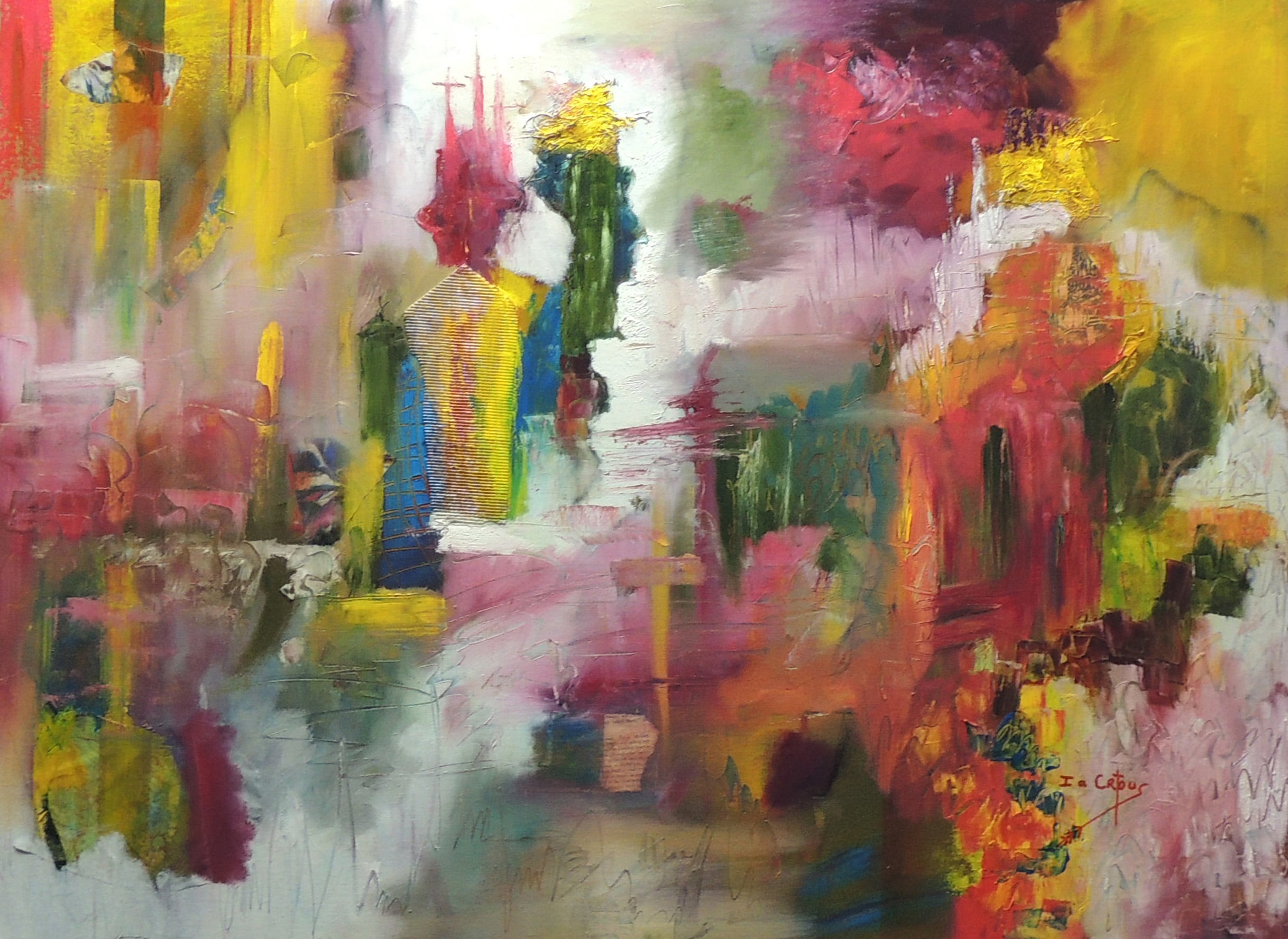Burning Desire
I lived the emotions in colors while creating this artwork. The process of acrylic and oil paints together with collage transformed the creation into meaning. The burning desire to do the Camino just once in my lifetime never materialized. Freedom to name the painting after completion, set the scene for you own interpretation, your own desires.
This artwork will enhance your home. Make sure to add this to your art collection.
ALL ART IS ABSTRACT, BUT NOT ALL ART IS ABSTRACT ART
A shift from a fine artist to an abstract artist needs clarification. All art is abstract, but not all art is Abstract Art. Although it seems to be a contradiction, the main difference, on face value, is the order, position, or combination of the words. The two words to describe a certain style, Abstract Art, never change position.
In this blog, the word art refers to the visual component, and specific the action of painting, and mark making. It includes any medium, on any kind of substrate to create an authentic personal interpretation.


WHY IS IT IMPORTANT TO DIFFERENTIATE BETWEEN ART FORMS?
During the 18th century the tendency to differentiate between applied or decorative art, Fine Art described the ‘higher’ form of art. Fine Art included painting, sculpture, architecture, poetry, acting, and music. (Ian Chilvers)
Generation after generation, artists developed their own schools, movements, styles, symbols, subjects, rules, and tendencies.
In modern times, fine art sometimes refers to a realistic representation of the world. It includes creating a scene or object using any kind of drawing material or paint. For most people Fine Art depicts a scene or objects visually, realistically, accurately, and recognizable.
As in any art form, visual art developed through the centuries. Leonardo da Vinci, a liberalist in his time, was the first artist to actively promote the term visual arts.
Visual artists learned to differentiate themselves in styles by a descriptive adjective, e.g., a fine artist, a realistic artist, or an abstract artist.
Realism is a serious attempt to interpret reality through the eyes of the artist. Realistic representational art can never be the absolute reality itself.
Abstract Art is independent. This genre is non-representational. It does not accentuate, nor is it seldom a recognizable scene or subject. Abstract art can still have some of these elements, but it is no longer the focus.


The interpretation of the reality of an abstract artwork shifted from the artist’s point of view, to be seen through the eyes of the viewer.
WHAT BRINGS THIS SHIFT INTO ACTION?
Viewers and artists play different rolls. Both parties evolved in their approach to shift the motivation and focus to suit their personal artistic needs.
You, as viewer, love to read a book, take a photograph, discuss the Covid 19 virus and listen to your favorite music. Your focused attention and experience at a specific moment are nothing else but an abstract of the wider, and much more complex world around you.
Your shifted focus motivates the interpretation of your reality. Regardless of what the intention of the artist was, the onlooker now has the freedom of an independent interpretative approach.
Fine Art focuses on a realistic expression, detail is important, and scenes or objects are recognizable. Fine artists use the elements and principles to convey their message through their eyes to the viewer.
In Abstract Art the focus shifted for both the viewer and the artist. But the greatest and deepest change in the creative process


HOW AND WHY DOES THE PROCESS DIFFER?
The change in focus for the abstract artist, is to emphasize authentic and emotional-honesty artwork. This genre is not merely a piling upon piling of paints or any other material without any meaning
Abstract art focuses on a different approach. All the elements and principles are visible for the trained eye. The start and end of non-representational art differs from pure representational art.
Some of these differential focus elements are typical of non-representational art:
- emotional and physiological power of color
- personalized symbols
- the execution thereof in an abstract manner
- the incorporation of various mixed media, and textures,
- experimentation of innovative techniques
- on different surfaces of all sizes
- the freedom to break every art rule
THE COMING OF AGE FROM A FINE ARTIST TO ABSTRACT ARTIST
The broader term fine artist refers to a realistic art style I practiced before 2020. I ‘copied’ the scene in a sketchbook. Taking photos from various viewpoints and laboriously wrote down every detail in case I forgot the time of day, the place, the date and even the colors.
I did an intense study of the work in progress, making the essential notan sketches, line studies, and color studies. Every piece of art was an interpretation of places I visited, or a still life.
Although color and loose strokes mirrored my feelings, I always had this inner voice to work freer and larger.
In the meantime, impressionistic features made their way onto the canvas. At the same time more and more elements of abstraction also slipped through the creating process.
The transformation was slow but expected: from realism to a hint of impressionism: and a sudden shift to Abstract Art.
The shift from a fine artist to an abstract artist was thus relatively easy but sudden. Deep down I knew it was inevitable.
The different approach to a creation reaches deep down into my soul and personal experiences. Visual inspiration, shared with passion, in an original, unusual way, celebrates the metamorphosis from a fine to an abstract artist.
Both genres are equally important for the roll players in the art world. One genre is not better, more expensive, or more professionally, than the other. It is the execution and focus that is important.



0 Comments